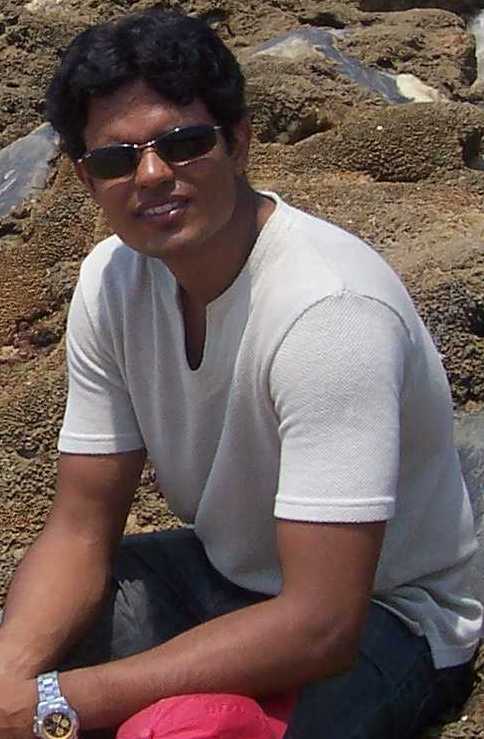"You don't have to be great to start, but you have to start to be great." - Joe Sabah
I never wanted to get to a starting line this year, just keep the focus on the recovery. The structural imbalance due to the revision ACL surgery is still very visible, a perceptible limp in the left leg when I am running slow paces.But I had a great training block last month and was able to rake up miles, running over 100km per week for 4 weeks in June, in an attempt to top the leader board in some meaningless corporate event. If I could keep such high intensity, surely I could run an easy 12hour run. I signed up, yes, you don't have to be great to start!
I ran up from home to Nandi hills with about 3 weeks to the stadium run. It was the most beautiful run. I had run the first 40k during the first 4:10 during that self-supported solo. The weather in Bangalore was also encouraging - windy and cloudy.I loved the build up to race day. It was good to feel the excitement as I focussed on not falling sick and getting good sleep. I decided against running a 40k training run in favour of keeping away from the incessant drizzles.I was confident to keeping a 10km (or 25laps) per hour for the first few hours. My plan A was to get to 55k in 6hours.
2:xx min lap phase
I started well, keeping a consistent 2:10 to 2:20 per lap for the first 75 laps - 30kms in 3hours, I was on target and was feeling good, in general. I was in my favourite 2XU full pants (about 10yrs old) and Saucony Triumph shoes (about 6000kms old), the clouds were providing a good cover and the weather was perfect. Unlike my regular training runs which I run on empty, I began drinking electrolyte from the 50ml cups. I should have seen the deficit when I went for two pee breaks, but failed to notice anything amiss until...
3:xx min lap phase
...CRAMP!!! A cramp started developing in the inside lobe of the quad on the right leg. All the focus on trying to keep the left leg strong and steady (remember the surgery?), and the cramp creeped up in the right leg. And this, within 30kms of the run - it was shame. But, I have run enough ultras to know that these "phases" come and go! I was willing to wait it out.But then came the huge self-deprecating inner voice, "get prepared to be mediocre in everything... yada, yada". It took me a few laps to get out the thoughts of quitting the race.
Welcome - run walk pattern. Jog about half a lap, walk the rest, till the muscle feels ok, then repeat!
First change I made was to change my portion size, moved from 50ml glass to chugg-from-the-jug. Second, I recruited Santosh, the coach of the Indian Ultra running team as my support crew and he helped me with changing to less fancy shorts and an even older Asics shoes after about 40k in 4h:24m. Third, I also visited the physio tent and got them to stretch my cramp out. Nice try! I hit 125laps in about 5h:50m, about 3k behind my target, but slowing down by the lap.
And so began the long run-walk and even longer conversations with my cramp, till I hit about 140laps /56km in 7hours.
4:xx min lap phase
Around this time, it also got pretty hot and out came a sun that we hadn't seen in weeks! Caps, water sprays, ice, cold water sponges appeared on the track. I decided to wait it out until it got more cooler or my cramp eased off, neither happened for the next 3 hours.So I resigned to walking for almost all of the next 5 hours. I knew I wanted at least a 75k, at about 12laps an hour, I would get close to that target, provided nothing else developed. I started counting off each hour with about 14 laps - yes, very pedestrian, but consistent.
With about 2 hours to go, a slight cramp starting developing also in my left ankle. I had to remind myself not to get ahead of myself. Target shifted to 200laps, and it looked possible.
I hit that in 11h:15m or so and now wanted a double marathon. Bring on another 10 laps. Its only when I passed that 210laps, did I muster some courage to start running again.
1:xx lap min phase - the finish
It's Paris Olympics time and in the 100m final yesterday, Noah Lyles was in the last place at the 40m mark, but finished as the Olympic Champion. In whatever goal you are trying to achieve, what's best for you to win at the end might require a slow start.
It is not how to start, but how you finish that matters! I picked up pace on the 211th lap, then as the confidence grew I went faster and faster. 211 lap in 3:05, 212 in 2:32, 213 in 2:15, 214 in 1:59, 215 in 1:50
To sum it up, I ended up with 214laps / 85.6km on the board in 12hrs, 16th overall in a field of about 100 runners, with shades of happiness & disappointment, but reminding myself again - it is the journey and not so much the destination that life is mostly about!
Tanzania's John Stephen Akhwari who was injured but still limped to the finish line of the Olympic marathon in 1968. He was asked why he had carried on, and his reply went down in history. "My country did not send me 5,000 miles to start the race," he said. "They sent me to finish the race."
Thanks for reading!


.jpg)

.jpg)





